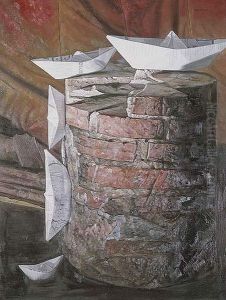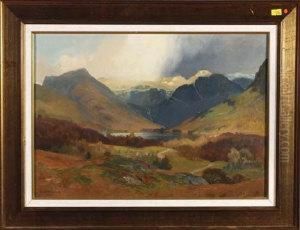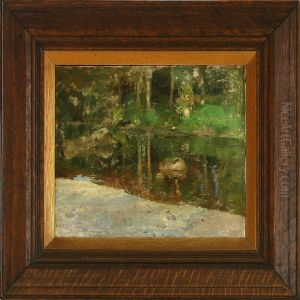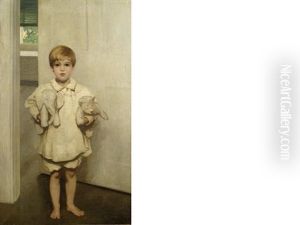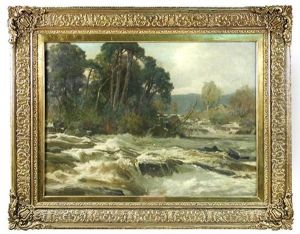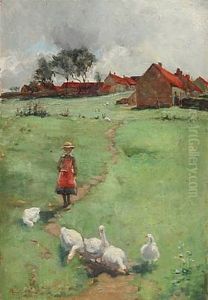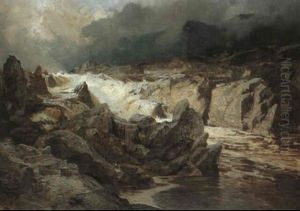Niels Moeller Lund Paintings
Niels Moeller Lund was a Danish-born British artist, recognized for his contributions to landscape and genre painting during the late 19th and early 20th centuries. Born on January 1, 1863, in Denmark, Lund moved to England, where he would spend the majority of his professional life, integrating into the British art scene and developing a distinctive style that reflected both his Scandinavian roots and his adaptation to British tastes.
Lund received his initial art education in Denmark before moving to England, where he furthered his studies and began to establish himself as an artist. Despite being Danish by birth, Lund became closely associated with the British art world, exhibiting his work at various prestigious venues, including the Royal Academy and the New English Art Union. His paintings often depicted scenes of everyday life, landscapes, and interiors, characterized by a muted palette and a sensitive treatment of light, reminiscent of the Danish Skagen painters, who also influenced his work.
Throughout his career, Lund was appreciated for his ability to capture the nuances of the environments he depicted, whether it was the bustling streets of London or the serene landscapes of the countryside. His works are notable for their atmospheric quality and the subtle interplay of light and shadow, which he masterfully employed to evoke mood and emotion. Despite his relatively short life, Lund left behind a legacy of art that continues to be appreciated for its contribution to the transition between Victorian and early modernist sensibilities in British art.
Lund's life and career were cut short when he died on September 28, 1916, in England. His work, however, has lived on, with pieces held in various collections and museums. Lund's contribution to the art world is a testament to the cultural exchange between Denmark and Britain during his lifetime and serves as an example of how artists can transcend national boundaries through their work. Today, Niels Moeller Lund is remembered not just as a Danish artist, but as an influential figure in the history of British painting, whose works continue to captivate audiences with their timeless appeal and distinctive blend of Scandinavian and British elements.
